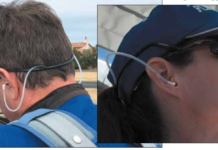ARE THEY SIRIUS?
I read the Garmin GXM42 satellite receiver and new weather subscription article in your May 2014 issue. Are these guys Sirius? Even with a $300 rebate, does SiriusXM really think many customers are going to pay roughly the cost of an ADS-B receiver only to pay another $385 to $1200 per year to get the weather data? Further, I don’t think the data—which doesn’t have traffic—is more useful than the free FIS-B ADS-B weather products.
Competing with free ADS-B doesn’t sound like much of a business plan, no matter the advantages. I’d be reluctant to buy the hardware simply because I’d be worried about it being orphaned.
My suggestion to SiriusXM is to follow the model of the cellphone carriers—give away the hardware—and require a two-year contract. That would attract those who want cockpit weather, but aren’t ready to pay the up-front cost of getting ADS-B. It would also provide some assurance that you haven’t just purchased what will be another high-tech paperweight in a few months. I still wouldn’t cough up $2100 for a two-year Sirius Aviation subscription.
Art Friedman
via email
In his SiriusXM weather article in last month’s issue, Larry Anglisano notes that SiriusXM has two sets of satellites to work with. Does that mean the company plans to make the old Baron Services weather and the new WSI-delivered weather available? In other words, accommodate dual-receiver technology that can receive both transmissions.
Seth Argoni
via email
Good point, Seth, but there’s no indication that SiriusXM plans to accommodate dual receivers. While this could allow users to take advantage of both weather providers, it’s also clear that WSI is going to be the primary and only provider to SiriusXM moving forward. There could be hope for owners of older receivers. According to Garmin, it’s working on making the new weather compatible with existing XM hardware.
broken plastic
The May 2014 issue had an article on replacement plastic, but there are other alternatives. I have an old Cessna 150 and much of its old Royalite plastic is shot and will need to be thrown away. However, I do have some pieces that could still be used if a few of the cracks could be repaired. I used Plast-Aid (www.plast-aid.com) on two cracks on a horizontal stabilizer wing tip. It worked like a charm and is very easy to work with.
Andrew H. Bittinger
via email
In your plastic replacement article, the metal panel sidebar suggested that replacing the plastic on the instrument panel with metal is a major modification that requires FAA approval. Since when is replacing cosmetic trim considered a major modification?
Richard McKinney
via email
It could be a major modification if you remove and replace structural metal, Richard. It’s up to the shop to make that determination and whether they can or will sign it off without FAA approval. That’s why we suggested using a panel kit that has STC approval.
Dakota power
I just finished reading the May 2014 Aviation Consumer and enjoyed the usual high level of content. However, whoever wrote the piece about the PA28-235 needs to brush up on his Lycoming knowledge, although you are long away from being the first to confuse these engines. The only thing the Lycoming O-540 in the PA28-235 and the TIO-540 in the Piper Navajo have in common is the manufacturer and the grey paint.
Lycoming builds no less than three unique O/IO-540 direct-drive engines (four, if you count the TIO-541 Duke engine.) These engines share little to no parts commonality. The highest normally aspirated rated power for the Lycoming parallel-valve engine family like the PA28-235 engine was 260 HP. Lycoming produced a TIO-540 parallel valve engine for the Mooney TLS, but that one suffered valve problems until Lycoming came up with cylinders with oil-cooled valve guides. Keep up the good work.
Terry Brokaw, A&P, I.A.
Three Rivers, Michigan
You’re correct, Terry. We blew it on the engine comparison. What we should have said is that the engine is a derated version of the one Piper used in the Comanche, not the Navajo.
The TIO-540-J3A5D is at the lower horsepower range of an engine family that includes the 350-HP TIO-540-J2BD. They’re related by dint of the same displacement and six cylinders.




